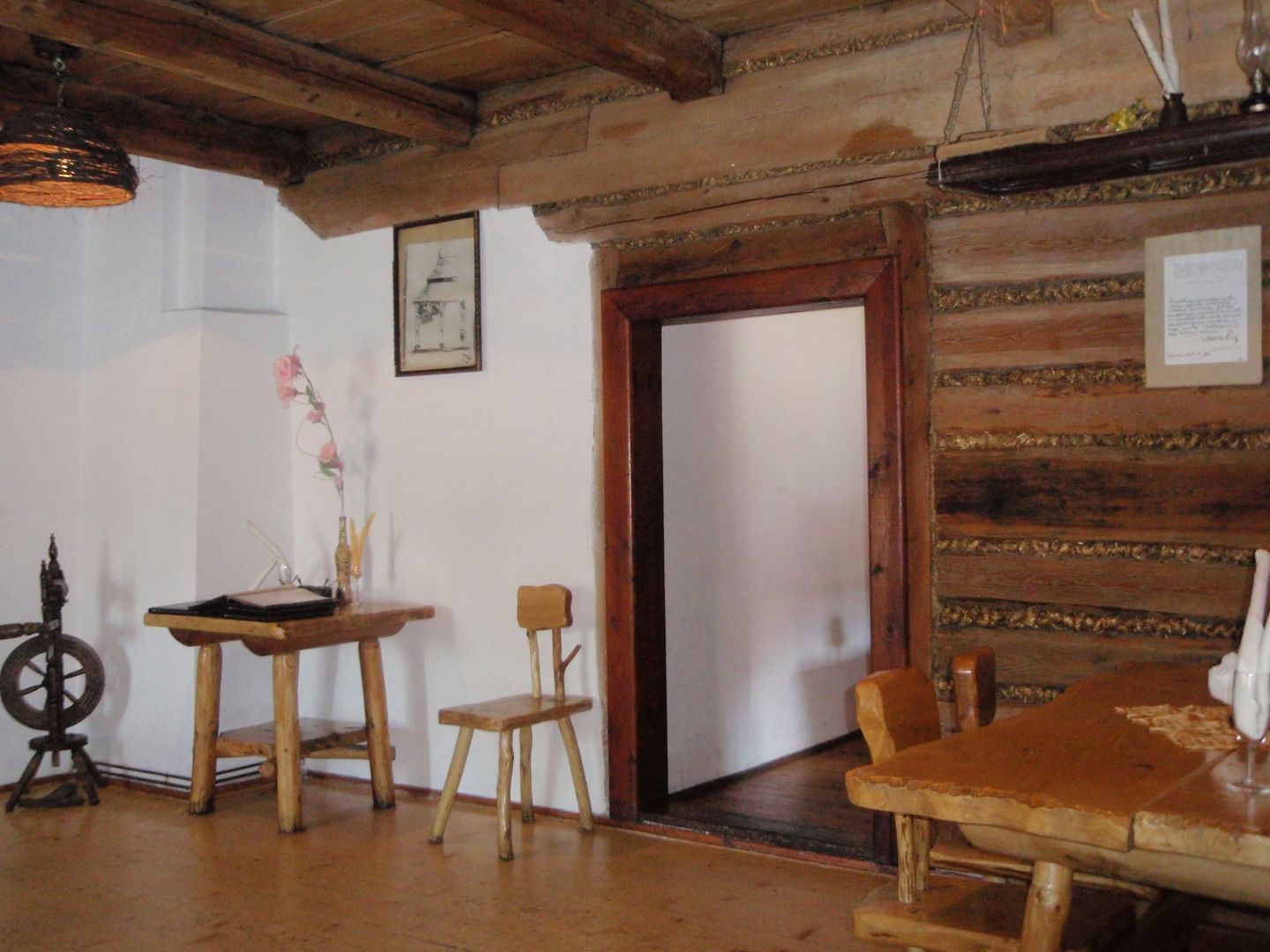Municipal Inn in Sławków
7.15

Overview
The Sławków Inn is a 17th-century wooden tavern from Sławków, included on the Wooden Architecture Trail in the Silesian Voivodeship. The building, constructed on a T-shaped plan, covers an area of 380 m², is single-story, built in log construction, with a low stone foundation. Its front facade is five-axis wide, and the interior space is divided by a broad gate and a passageway hallway. The roof has a distinctive Polish shape, covered with wood shingles and supported by stone columns, creating deep arcades. At the rear, there is a coach house with a stable, and historically, the building was used as an inn.
The inn has a rich history dating back to the 13th century, although its current appearance dates from the 18th century. It has survived to this day with few alterations, underscoring its significant role in local culture. In 1697, King Augustus II the Strong visited the inn, highlighting its importance as a meeting place for prominent figures. In the 19th century, it was leased by the town, becoming a key source of municipal revenue. In 1862, demolition was considered, but thanks to the efforts of the tenants, the building was saved and renovated.
Until 1939, the inn remained under municipal ownership. During the occupation period, it was converted into a "German House." After the war, from 1969 to 1987, it housed the town museum, and since 1992, the building has been partially adapted into a restaurant. It is noteworthy how not only was the structure preserved, but its spaces were also repurposed for new functions, reflecting its enduring value and place in the heart of the local community. The Sławków Inn is an excellent example of regional wooden architecture, and its history, intertwined with significant events and figures, emphasizes its cultural importance.
Location
2025 Wizytor | All Rights Reserved